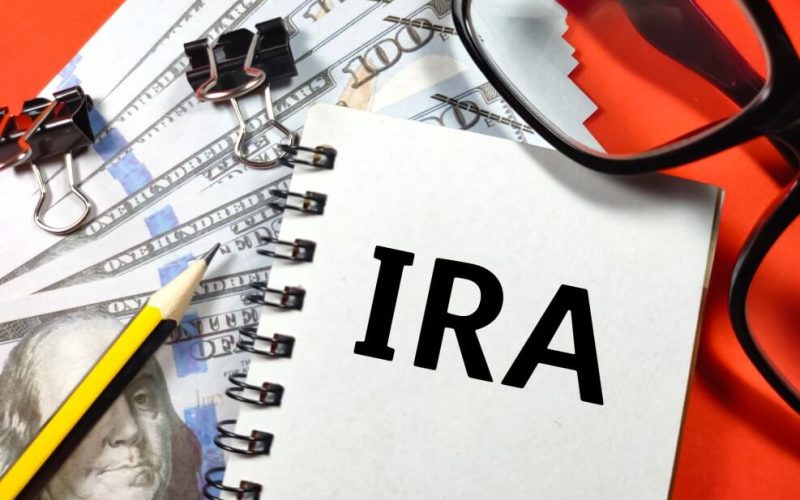In the United States, individual retirement accounts account for a third of all retirement assets. Americans had $9.2 trillion in IRAs at the end of 2017, out of a total of $28.2 trillion in retirement assets. IRAs are popular among those who wish to save for retirement because they allow you to increase your money while avoiding paying taxes. You should keep reading if you want to know if you can have several IRAs. Also, you may be wondering how many IRAs you can have. You can have as many IRAs as you desire, according to the response. If you’re wondering, “How many Roth IRAs can you have?” you’ll get the same answer. However, the total amount of regular contributions you make to each of your Roth or traditional accounts each year can only be the maximum permissible contributions.
What Is an Individual Retirement Account (IRA)?
An individual retirement account (IRA) or an individual retirement arrangement (IRA) is a type of retirement account. This is a type of account that encourages you to put money down for your retirement. Individual retirement accounts (IRAs) are accounts that you can open on your own, regardless of your income, as long as you have enough money to contribute.
The goal of an IRA is to allow you to make tax-advantaged contributions. A traditional IRA allows you to make pre-tax contributions and later claim a tax deduction. Until you retire and start drawing distributions, the money in the account can grow tax-free.
When you receive distributions, you must pay taxes on the amount received. If you have a Roth individual retirement account, you will make contributions after you have paid your taxes. Your money can then grow in the account, and your payouts will not be taxed once you retire.
Overview
Anyone with earned income, including those who have a 401(k) through their job, can open an IRA. The only restriction is on the total amount people can contribute to retirement accounts in a single year while still receiving tax benefits.
Stocks, bonds, exchange-traded funds (ETFs), and mutual funds are among the financial items available to IRA investors. Self-directed IRAs allow investors to make all of their own decisions and give them access to a wider range of investments, including real estate and commodities. Only the most dangerous investments are prohibited.
Traditional IRAs, Roth IRAs, SEP IRAs, and SIMPLE IRAs are among the various types of IRAs. Each has its own eligibility, taxes, and withdrawal policies. Traditional and Roth IRAs are available to individual taxpayers, and SEP and SIMPLE IRAs are available to small business owners and self-employed persons. An IRA must be opened with a financial institution that has been approved by the Internal Revenue Service to provide these accounts. Banks, brokerage firms, federally insured credit unions, and savings and loan associations are among the options.
Because IRAs are intended for retirement savings, taking money out before the age of 5912 normally results in a 10% penalty. Withdrawals for school expenses and first-time house purchases, for example, are prominent exceptions. You will owe income tax on an early withdrawal if your individual retirement account is a regular account rather than a Roth account.
How Many IRAs Can You Have?
There’s no limit on the number of IRAs you can have. But there are limits on how much you can contribute in a single year.
The number of IRAs you can have is unrestricted. You can even have multiples of the same individual retirement account kind, such as Roth IRAs, SEP IRAs, and regular IRAs.
However, just because you have more IRAs doesn’t mean you can contribute more money each year.
In 2021 and 2022, that amount will be $6,000 for Roth IRAs and $7,000 for traditional IRAs (if you’re 50 or older).
If you choose, you can split that money between IRA kinds in any given year. (If you’re undertaking an IRA rollover transferring money from a former employer’s retirement plan, such as a 401(k) into an individual account contribution restrictions don’t apply.)
Digital Currency Options For Your IRA
The benefits of having multiple IRAs
Having multiple IRAs can help you fine-tune your tax strategy and gain access to more investment choices and increased account insurance. Here are the pros of having multiple IRAs:
#1. Tax diversification
IRAs come in a variety of shapes and sizes, each with its own set of tax benefits. A typical IRA provides an immediate tax deduction. Allowing you to defer paying taxes until you begin withdrawing funds from the account in retirement. Although there is no tax advantage on donations to a Roth IRA, eligible withdrawals are tax-free. Here’s a breakdown of the differences between traditional and Roth IRAs.
#2. Investment diversification
Having IRAs at many financial institutions might expose you to various sorts of investments and even investing strategies. Let’s say you want to have the majority of your retirement funds professionally handled. But you also want to use a portion of it to invest in individual stocks on your own. You might open one IRA with a robo-advisor (for low-cost, automated portfolio management) and another with a discount brokerage that offers stock trading or you could open two separate accounts with the same firm if it offers both services. Compare some of the greatest IRA providers with our overview of the best IRA providers.
#3. Flexibility on withdrawals
Traditional and Roth IRAs have distinct regulations governing withdrawals both before and during retirement, in addition to how your assets are taxed. Contributions to a Roth IRA (not earnings) can be withdrawn tax-free and penalty-free at any time for any reason. Traditional IRAs offer limited flexibility, however they do allow for penalty-free early withdrawals (before age 5912) in certain circumstances. Withdrawals from a regular IRA, unlike the Roth, are required after age 72. With the Roth, no minimum withdrawals are required.
#4. More insurance coverage for your cash and investments
SIPC and FDIC insurance on investment and deposit accounts can cover your losses if the brokerage or bank where your IRA is held collapses. For a single account holder at a single institution, coverage is normally capped at $500,000 (SIPC) and $250,000 (FDIC), although there are options to expand your coverage by opening numerous accounts. If you have two Roth IRAs at the same SIPC-insured institution, for example, you are only eligible for $500,000 in coverage. However, if you hold both a Roth and a regular IRA at the same institution, each account is a different entity, with SIPC coverage of $500,000 for each.
#5. Simplified estate planning
The procedure for establishing an IRA includes naming beneficiaries. While you can name more than one beneficiary per IRA (primary and contingent). Having various people named on separate accounts can help you avoid beneficiary squabbles when you pass away.
Why Would a Person Want More than One Roth IRA?
Having several Roth IRA accounts comes with both advantages and disadvantages. The following is a list of some of the reasons why an individual might want to have more than one Roth IRA:
Put money aside for a variety of uses: It’s possible that an investor may desire to have multiple IRAs for a variety of reasons. They might establish one Roth IRA for income in retirement, and another for cash to use in an unexpected need.
Make sure your investments are spread out: It may be possible to simplify the process of diversifying your retirement investments by opening multiple Roth IRAs. Using multiple IRAs can be a simple method to accomplish what otherwise might be a difficult task if you want to diversify your investments and expose yourself to varying degrees of risk.
Boost the protection provided by your insurance: The FDIC provides insurance for a wide variety of investment accounts. If you have a single Roth IRA and are getting close to the FDIC insurance protection limit of $250,000, creating a second account at a different financial institution provides the same level of security for the second account as the first.
Ease the burden of inheritance: If you intend to leave some of the money that is saved or invested in your IRA, you must.
Is it Smart to Have Multiple Roth IRAs?
The establishment of several Roth IRAs may make it simpler to pursue multiple distinct investing strategies or to designate distinct beneficiaries for each account. On the other hand, it may be challenging to keep track of the contributions made to several accounts, and errors in donations may result in fines from the Internal Revenue Service (IRS).
Can I Contribute to a Roth IRA if I Make More than 200k?
To be eligible to make contributions to a Roth IRA in 2023, your Modified Adjusted Gross Income (MAGI) must be less than $144,000 if you file your taxes as a single individual, and it must be less than $214,000 if you file your taxes jointly. To be eligible to take profits from a Roth IRA tax-free, you need to be at least 59 1/2 years old and have kept the account for at least 5 years.
10 Things You May Not Know About Your IRA
The fact that your individual retirement account (IRA) is “individual” is one of the most crucial qualities. You have complete control over your deposits and withdrawals, and you are responsible for paying taxes on distributions. You have complete control over what happens to it when you pass away.
Read on for some little-known features that will help you get the most out of your contributions if you want to take advantage of everything your IRA has to offer.
#1. It’s OK to Have More Than One IRA
It is possible to end up with more than one IRA for a number of reasons.
- You had an existing Roth IRA and then rolled an old 401(k) into a traditional IRA.
- Your adjusted gross income (AGI) rose to the point where you were no longer eligible to contribute to your Roth IRA, so you opened a traditional IRA.
- You inherited an IRA, and you already had one of your own.
- You maintained your Roth IRA and opened a traditional IRA to take advantage of tax deductions.
In addition, you can contribute to as many IRAs as you desire, but your total IRA contributions are to the yearly maximum. For 2020 and 2021, the annual maximum contribution is $6,000, or $7,000 if you are 50 or older (contribution limits for 2020 remain the same). So, if Bob, 42, contributes $2,000 to his regular IRA, he can only contribute $4,000 to his Roth IRA in the same year.
#2. Contributions to Regular IRAs Must Be in Cash
When contributing to your IRA for the year, you must do so in cash. This restriction does not apply to the distribution of rolled-over securities, as these must be rolled over in kind.
#3. Losses May Be Tax-Deductible
The opportunity to delay taxes on gains and investment income is one of the key benefits of an IRA account. You can’t use losses inside an IRA to offset gains, but you can deduct a loss if you distribute the whole balance from a conventional IRA and the amount is less than your account’s basis.
The Internal Revenue Service (IRS) permits you to deduct losses on a traditional IRA, but there are some restrictions. Assume you’ve withdrawn all of your assets from all of your traditional, SEP, and SIMPLE IRAs during the year, and your total basis is less than the entire amount. You can only deduct the amount that exceeds 2% of your AGI after combining the loss with other miscellaneous deductions.
“For Roth IRAs, the same rule applies,” explains Curt Sheldon, CFP®, EA, AIF, president and lead planner at C.L. Sheldon & Company, LLC in Alexandria, Va. “You can deduct losses up to the dollar amount of your contributions (basis) until all Roth IRAs have been emptied all money disbursed.”
#4. You Don’t Have to Take RMDs from All of Your IRAs
Traditional IRA owners must start taking required minimum distributions (RMDs) by April 1 of the year after their 72nd birthday. The minimum amount distributed is determined by the account balance on December 31, the preceding year, as well as the owner’s life expectancy. The RMD must be each year after that.
You don’t have to take RMDs from all of your traditional IRAs if you have more than one. You can take the total RMD amount from one IRA or a combination of IRAs by adding the total RMD amounts from each of your IRAs. For example, you might prefer to liquidate the investments in one IRA over those in another.
5. Different Rules Govern Spousal and Non-Spousal Beneficiaries
The option to transfer cash directly to beneficiaries without going through probate is one of the advantages of owning an IRA. Spousal beneficiaries can claim inherited IRAs as their own. Which gives them the option to make additional contributions and regulate distributions.
“When a spouse inherits an IRA, they have a number of options,” explains Jillian Nel, CFP, CDFA, director of financial planning at Houston-based Inscription Capital LLC. “They have the option of setting up their personal IRA or a beneficiary-designated IRA.” The latter is the case if the spouse is under the age of 5912 and needs money for whatever reason. The 10% penalty on IRA withdrawals to owners under the age of 5912 would be with a beneficiary account.”
Inherited IRAs cannot be their own by non-spouse beneficiaries. They can’t add to them, and they have to sell the account within five years after the owner’s death or disperse the funds across their lifetimes. In general, the distribution alternatives available are by the age of the IRA owner when he or she dies. If you want to leave IRA assets to your children or grandchildren, keep this in mind.
#6. You Can Transfer or Roll Over Your IRA
Individuals frequently transfer accounts from one financial institution to another. If you want to keep the same sort of IRA account with a different company. You can transfer or roll over your assets.
A transfer is when assets are directly from one financial institution to another without the need to disclose the transaction to the IRS. “You can execute a direct transfer from one financial institution to another as many times as you like in your IRA.”
Be aware that each firm may have its own account creation and close-out fees, as well as an annual fee. So keep this in mind when switching firms,” says Rebecca Dawson, a financial advisor in Los Angeles.
A rollover is when you get a distribution of your assets and then roll the money over within 60 days.
“When a group retirement plan, such as a 401(k), is into an IRA. If done correctly, some of the 401(k) plan advantages can be preserved. This is why, according to Kirk Chisholm, principal at Innovative Advisory Group in Lexington. Mass., rolling a 401(k) into a rollover IRA rather than a contributing IRA can make sense.
#7. Your IRA Can Be an Annuity
If the financing vehicle is an individual retirement annuity, your annuity can function under the same criteria as an IRA. One advantage is that annuity policies are to offer lifetime retirement income.
#8. IRAs Can Be Managed through Accounts
With a brokerage account, you can give your financial advisor written permission to make investment decisions and regular transactions without informing you beforehand. For account management, a fixed fee is frequently paid. This type of activity is permitted in IRAs if you and your broker have reached an agreement to allow it.
“I’m a firm believer in having large IRA assets professionally managed. A good financial advisor can help you create a low-cost personalized portfolio and keep track of any changes you need to make “Dan Danford, CFP, founder and CEO of the Family Investment Center in St. Joseph, Mo., agrees. “They have access to thousands of proven investment possibilities and can adapt to changes in your circumstances, product advances, or economic shifts.”
Danford adds, “As a professional, “When retirees have a huge portfolio and want to save money by going it alone, I get concerned. Too many times, I’ve witnessed poor outcomes. It’s penny-wise and pound-foolish for the vast majority of individuals.”
#9. Investment Options May Be Limited
The IRS imposes restrictions on the sorts of investments that can be in an IRA. But your financial institution may impose further asset limitations. The IRS, for example, allows some gold and silver coins, but most financial organizations do not. Similarly, some mutual fund firms prohibit individual equities from being in IRAs.
#10. Age Is Just a Number, Mostly
Anyone, even minors, who are given a salary, tips, or hourly pay for their work (earned income) is eligible to contribute to a traditional IRA. 13 This implies that as soon as your children obtain their first job, they can begin saving for retirement because it provides for long-term tax-deferred savings. An IRA is a great alternative for kids who earn more than they intend to spend.
Michelle Buonincontri, CFP, CDFATM, a financial advisor in Phoenix, Ariz., adds that “when you start investing, it exceeds how much you invest.” Starting an IRA as a teenager, ideally, a Roth IRA, is a good choice if you have earned income. By utilizing the power of compounding interest, it can have a big influence on your retirement funds.“
The tax penalty for early distributions will encourage your children to delay taking distributions from their IRA. Allowing them to spend funds for college or up to $10,000 toward the purchase of their first house without penalty. It also instills in your children the importance of investing at a young age.
As long as they have earned money, senior citizens can continue to contribute to Roth IRA accounts. This is a great place to put money that will be passed down as an inheritance. Prior to the passing of the 2019 SECURE Act, seniors could not contribute to traditional IRAs after reaching the age of 7012. But now they can do so at any age, as long as they have earned income. Contributions to regular IRAs are no longer by age.
Is it Better to Have One or Multiple IRAs?
If you have more than one individual retirement account (IRA), you will have access to a wider range of investment options and your account will be covered to a greater extent against losses. The following are some advantages of having more than one individual retirement account (IRA): Tax diversification Various forms of IRAs offer a variety of tax savings.
Is it a Good Idea to Have Both a Traditional IRA and a Roth IRA?
If you are able to do so, it is recommended that you make contributions to both a standard IRA and a Roth IRA. In retirement, you will have the option of withdrawing taxable funds or tax-free funds if you follow these steps. Tax diversification is what financial advisers name this technique, and it’s often a wise idea to use when you are unsure what your tax situation will look like after you are retired.
Is it Good to Have Both IRA and Roth IRA?
When the time comes for you to start taking money out of your IRA, having both types of IRAs gives you the option of taking taxable income or income that is exempt from taxes, provided you can afford it and are eligible for both. A person who is younger than 50 years old, for instance, is eligible to contribute $3,250 to a standard Individual Retirement Account (IRA), as well as an additional $3,250 to a Roth IRA.
Why are IRA limits So Low?
The law places restrictions on the amount of money that can be contributed to individual retirement accounts (IRAs), Roth IRAs, 401(k)s, and other types of retirement savings plans. These restrictions are in place to ensure that highly paid workers do not enjoy a greater share of the tax advantages that retirement savings plans offer than the average worker.
Digital Currency Options For Your IRA
Conclusion
IRAs are designed to be flexible. Understanding how the various features function might assist you in customizing your retirement savings to match your specific requirements. If you’re not sure where to begin, look into the top IRA brokers.
FAQ
Can I have a Roth IRA and a Roth 401k?
But with a Roth 401(k), if you want to withdraw money early, you may end up paying a 10 percent penalty tax on any earnings taken out, but not on your contribution amounts. Otherwise, to access your 401(k) funds without tax, you generally would have to take out a loan with the Roth 401(k), if the plan permits.
How much should I have saved by 40?
To stay on track to retire at 67, you should have saved 3 times your income by age 40, according to retirement-plan provider Fidelity Investments.
Can a married couple have two ROTH IRAs?
Many spouses ask, “Can my wife and I both have a Roth IRA?” Yes, you can each have your own account to contribute to. This maximizes your total contributions and gives your money more compounding power.
How much does the average 25 year old have saved?
If you actually have $20,000 saved at age 25, you’re way ahead of the national average. The Federal Reserve’s 2019 Survey of Consumer Finances found that the median savings account balance was $5,300 across households of all ages, not just 20-somethings.






